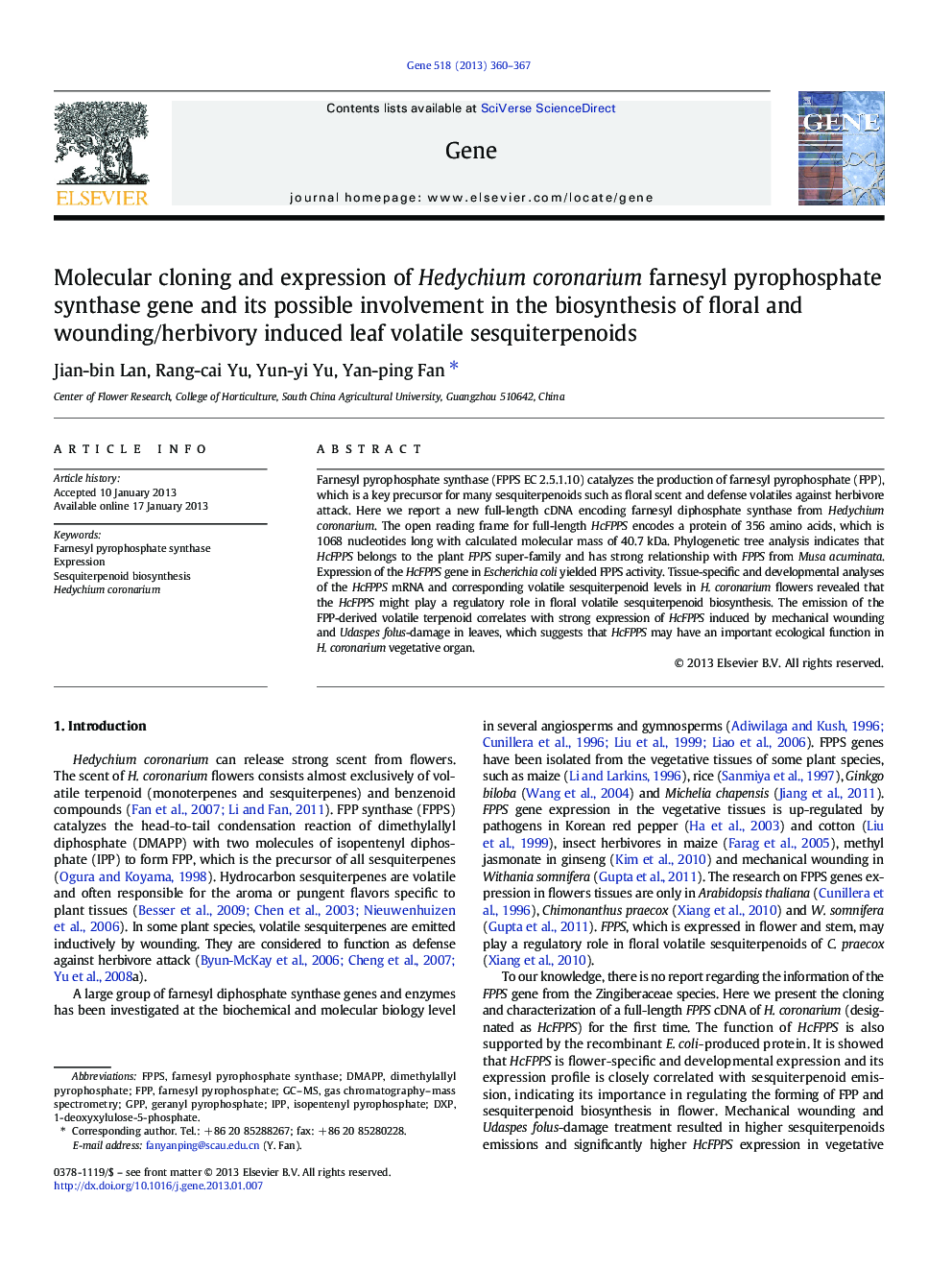| Article ID | Journal | Published Year | Pages | File Type |
|---|---|---|---|---|
| 2817380 | Gene | 2013 | 8 Pages |
Farnesyl pyrophosphate synthase (FPPS EC 2.5.1.10) catalyzes the production of farnesyl pyrophosphate (FPP), which is a key precursor for many sesquiterpenoids such as floral scent and defense volatiles against herbivore attack. Here we report a new full-length cDNA encoding farnesyl diphosphate synthase from Hedychium coronarium. The open reading frame for full-length HcFPPS encodes a protein of 356 amino acids, which is 1068 nucleotides long with calculated molecular mass of 40.7 kDa. Phylogenetic tree analysis indicates that HcFPPS belongs to the plant FPPS super-family and has strong relationship with FPPS from Musa acuminata. Expression of the HcFPPS gene in Escherichia coli yielded FPPS activity. Tissue-specific and developmental analyses of the HcFPPS mRNA and corresponding volatile sesquiterpenoid levels in H. coronarium flowers revealed that the HcFPPS might play a regulatory role in floral volatile sesquiterpenoid biosynthesis. The emission of the FPP-derived volatile terpenoid correlates with strong expression of HcFPPS induced by mechanical wounding and Udaspes folus-damage in leaves, which suggests that HcFPPS may have an important ecological function in H. coronarium vegetative organ.
Graphical abstractFigure optionsDownload full-size imageDownload high-quality image (207 K)Download as PowerPoint slideHighlights► A new FPPS gene was cloned and its function was investigated. ► The HcFPPS was constitutively expressed in flower relative to fragrance release. ► The HcFPPS expression was induced in leaves by wounding and herbivore treatment.
